Client Chronicles: Simplifying Furniture with Jan Paul Koning
Salsita had recently finished building their 3D Product Configurator Framework and was searching for a company that offered customizable products. JP was interested in implementing a 3D product configurator on his website.
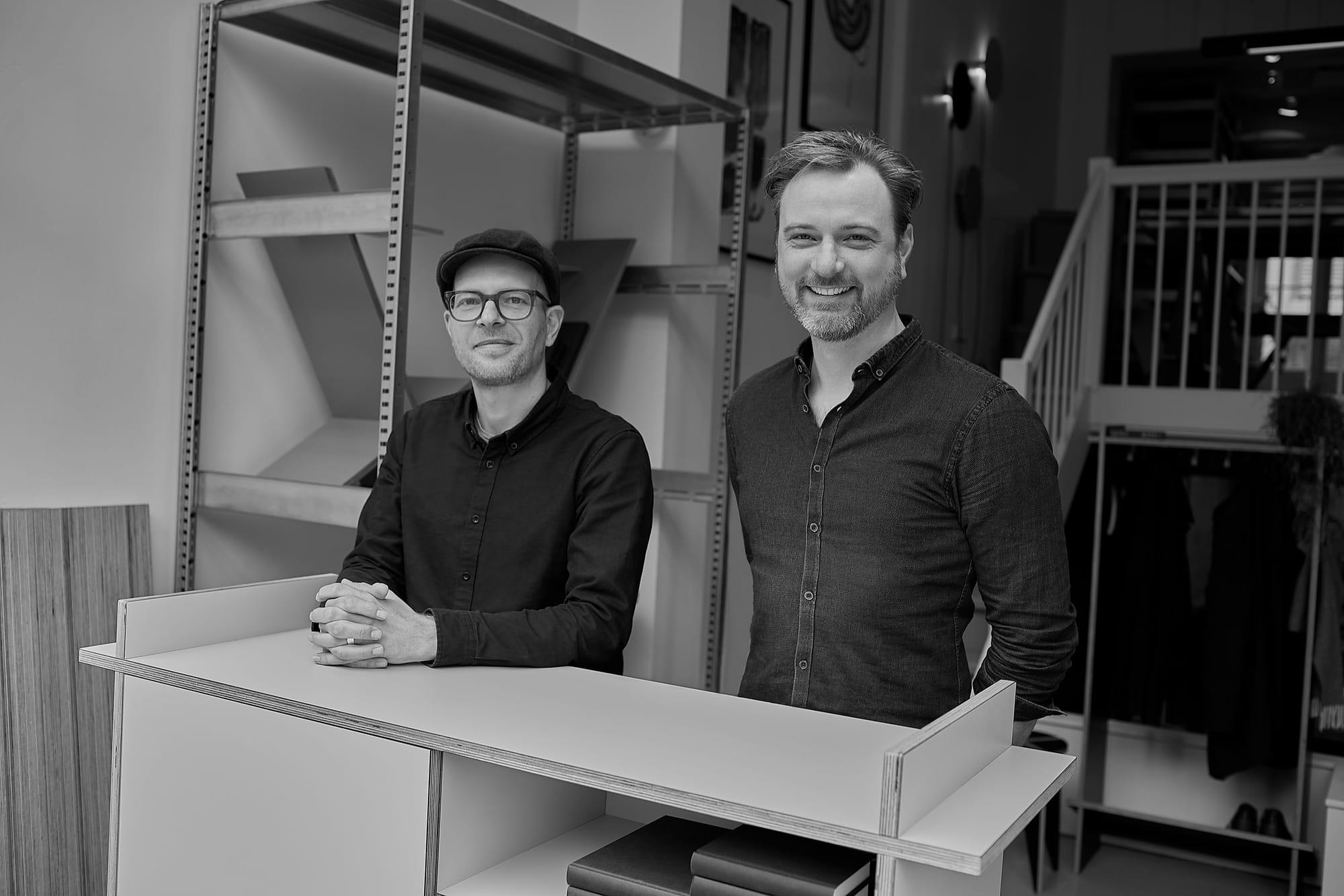
Jan Paul “JP” Koning has always been a techie. And though he managed to fulfill this role during school and work, there was another urge he needed to satisfy. What originally drew JP to architecture, and ultimately designing furniture, was the connection between technology and creativity.
Before JP unexpectedly found himself in the designer furniture business, he had a successful career as an architect. After graduating university and spending time between the Netherlands and England, JP landed a project architect position at a highly sought-after Danish architecture firm.
Schmidt Hammer Lassen Architects won an architecture competition that secured them a contract to build the new International Criminal Court (ICC) in The Hague. JP had followed this competition the way most people follow the news. “I found the competition interesting and was impressed with their submitted design,” said JP.
A short time later, JP read a job advertisement that they had placed for a project architect. He didn’t waste any time submitting his resume and writing a cover letter. “It only took about five minutes to write,” said JP. “It just came right off the top of my head.” He was invited for an interview and, after six months of back-and-forth, he landed the job.
It was like working in the Premiere League of Architecture.
The first couple of years at Schmidt Hammer Lassen were similar to his formative years: weekly back and forth travel to London. When the project for the new ICC began, JP moved to The Netherlands. He stayed onsite in The Hague for two years.
As the ICC project was coming to a close, JP started thinking about his future plans with and beyond Schmidt Hammer Lassen. They were satisfied with his work and wanted him to transfer back to the Copenhagen office. Though JP’s biggest added value would be to work for them in the Netherlands, since he was a native Dutch speaker and knew the Dutch regulations well.
JP began looking at competitions and found one for the University of Applied Science Utrecht. Schmidt Hammer Lassen won it, and JP stayed on for a couple of more years. Though things wouldn’t turn out as he envisioned.
Back to the Drawing Board
The university project mainly consisted of meetings and wasn’t as hands-on as other projects he had worked on. “Becoming a project architect was my dream, but then I got it and it wasn’t what I had expected,” said JP. “I felt like more of a manager and less of a designer.” He wanted to prove to himself that he could do it and, having done so, he was ready to move on.
While the idea of doing something new gained traction, JP reconnected with his childhood friend Peter Smit. Peter, a 15-year veteran of the fashion industry, had recently and unexpectedly moved back from the US. He ended up staying at JP’s place. As they rekindled their friendship, an idea formed between them.
The most exciting thing for me about KILO is that we are not just designing the furniture, but we’re making it ourselves, too. If I have a wild idea in the morning, I just go to the workshop and I can have it in my hands in a couple of hours.
Without a workshop, or even a proper set of tools, JP and Peter started designing and making furniture—for fun. The first piece they made was a simple cupboard system (which they currently sell) called the kiloWatt. “It was a very loose idea at the time,” said JP. “But sometimes that’s all it takes.”
When Peter’s girlfriend moved back to the Netherlands, they got their own place. JP and Peter continued to make furniture for themselves. “I told Peter, rather casually, ‘Wouldn’t it be great if we could make a living from this?’” said JP.
Peter actually started making furniture 20 years before this when he began moving internationally. "I envisioned taking some fashion-based principles to the furniture industry," said Peter. "The form it took wasn't there yet at the time, but the seed had planted itself in my brain."
The time had now come. But they knew if they wanted to get serious about this venture that they would need a serious tool.
Their computer numerical control (CNC) machine is essentially the heart of their operation. It allows JP and Peter to get accurate furniture designs and precision measurements within a tenth of a millimeter. “We knew from day one that the CNC machine had to be part of our process,” said JP.
He and Peter were inspired by Japanese furniture because of the lack of nails and screws in their designs. KILO has a similar, simplistic approach. Their wide range of designer furniture is built from a single material, using a single machine.
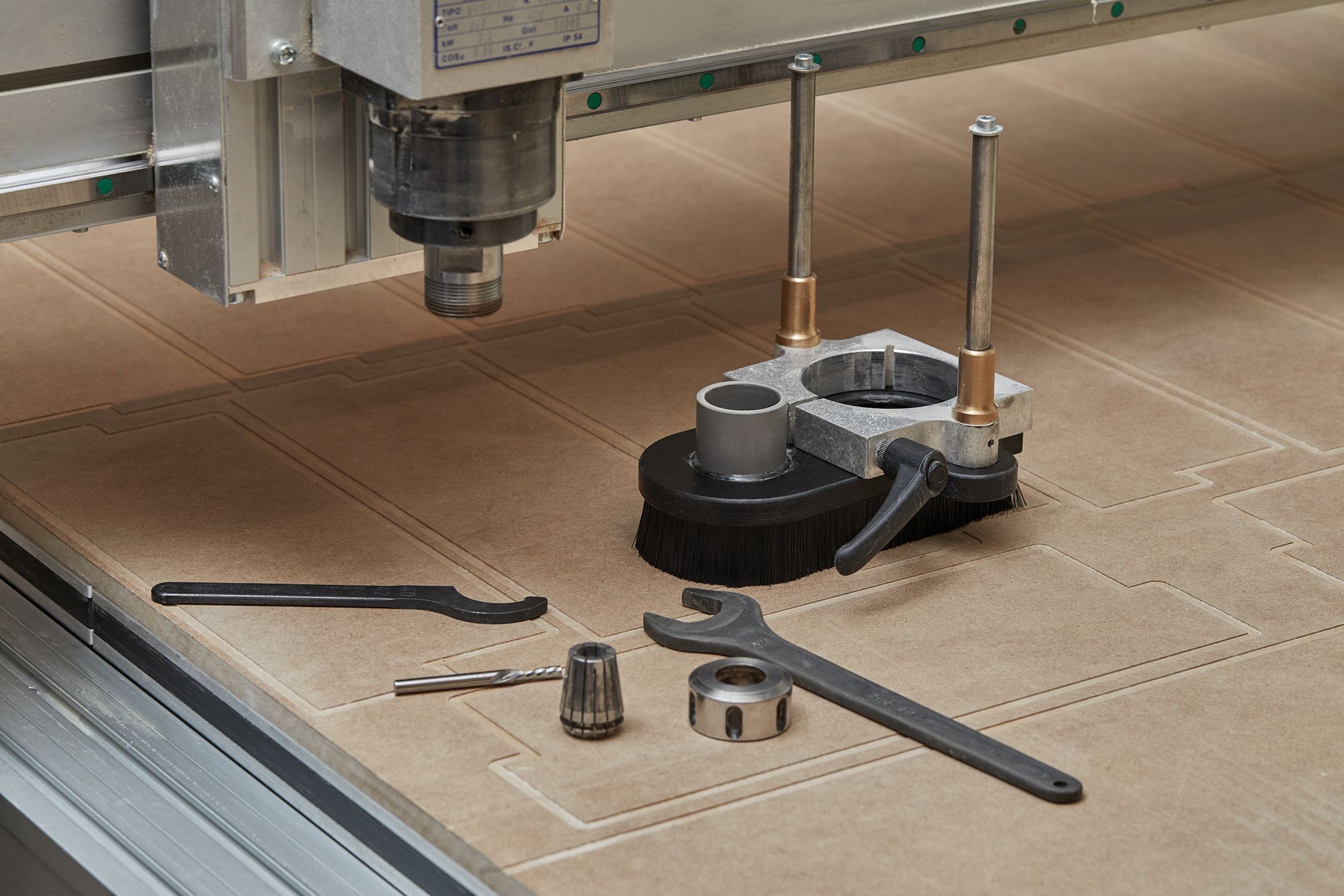
JP and Peter knew someone who had a CNC machine and would send him designs. He would make the pieces and send them back to JP and Peter to assemble. “When we started, it was no more than a hobby project,” said JP. “We had no serious ambitions before we bought our own CNC machine.”
Using someone else’s CNC machine turned out to be a tedious process. “We put the finished pieces together, but found out that some of them weren’t right,” said JP. “We had to redraw the designs and send them back.”
This continued for a couple of weeks.
CNC machines are huge investments, so JP and Peter found a few other people to whom they could send their designs. Their collection of homemade furniture started to pile up and soon they’d have an answer to their question: Can we do this for a living?
Not Just a Furniture Shop
A friend of Peter’s came by the house/workshop and saw the furniture they had made. “She was impressed and asked if we could do her office,” said JP. “I told her, ‘Of course, we can.’” Even though they didn’t have much experience yet, they committed themselves to the project. “How difficult could it be?” thought JP.
Designing and building furniture for an entire office was a big undertaking, but it proved to be the perfect testing ground for JP and Peter. “The process was slow going, but this was our big shot,” said JP. “When we saw how well it went, along with positive feedback from Peter’s friend, we knew this was an actual, feasible business model.”
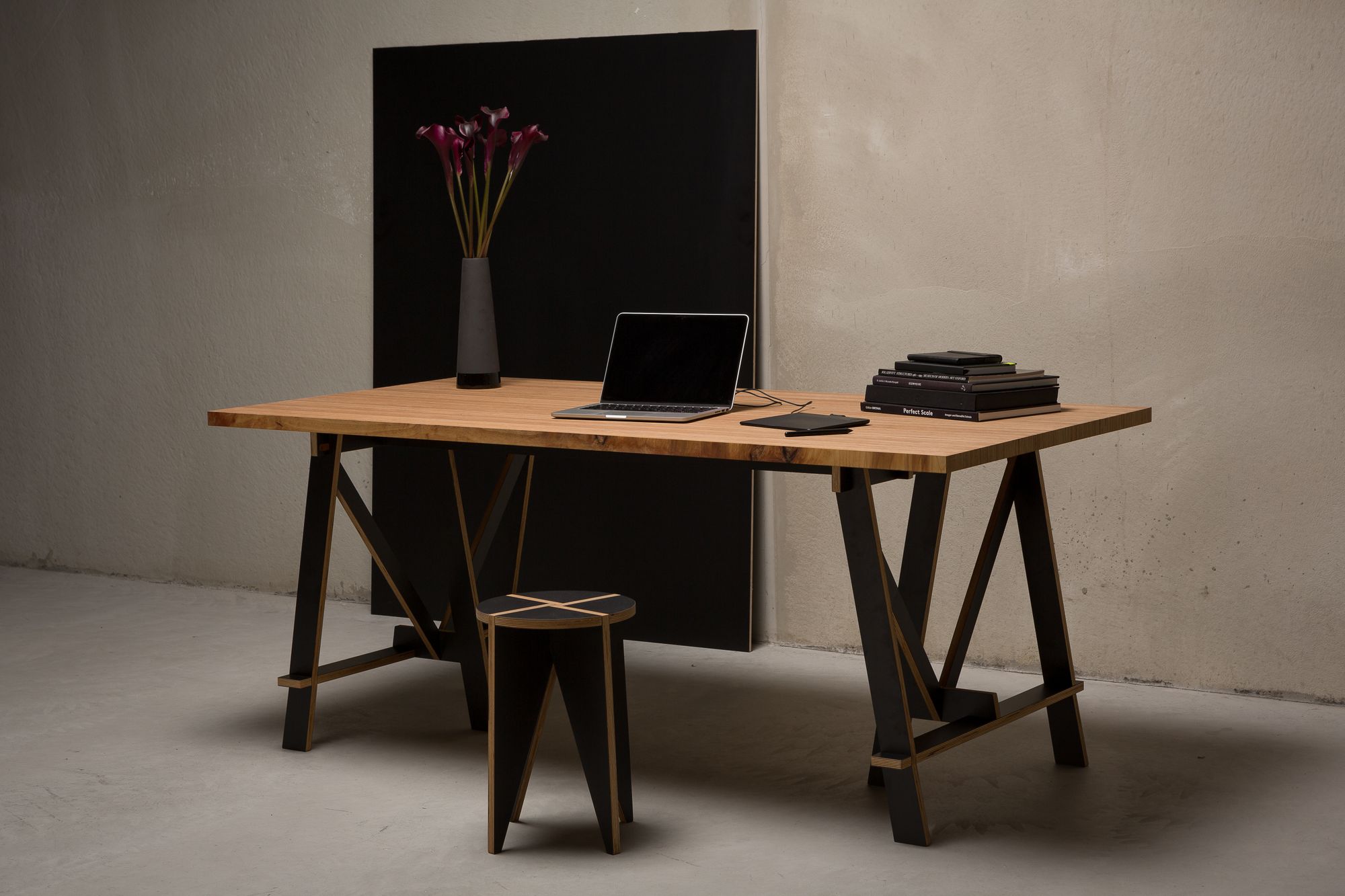
From the get-go, JP and Peter knew they wanted more than just a furniture shop—they wanted to be a brand. This foresight helped when the time came to name the company. “We planned to be international, so the name had to be adoptable for anyone in the world,” said JP. “Something short, but powerful.”
They figured since most countries pronounce “kilo” the same way, and use the metric system, that that would be the right direction to go. Also, since they use a singular, heavy piece of material, kilo (which means 1000) was quite suitable.
“I would prefer furniture to be desirable because people love its quality and how it looks. Not because they think it’s a great concept.”
Apart from their simplistic approach, JP aims at making furniture which will last generations. He likes to emphasize that they are telling stories through their furniture. “I’m not interested in making a ton of money if it means putting poor quality products out into the world,” said JP. “I want to make something beautiful and affordable.”
Before JP and Peter could start telling these stories, they had to get out of their current gigs. JP was finishing up the university job at Utrecht and started to gradually reduce his availability at Schmidt Hammer Lassen. Peter was working on a large IT project for the fashion brand he worked for, but he already decided that it would be his last for the company. Once the project finished, he would join JP full-time.
Next-Level Design
KILO officially started in 2018 with JP and Peter designing and making the furniture, as well as delivering the finished product, and procuring work for the website and marketing. To make building their company easier, they offered work to friends and companies that they couldn’t do themselves.
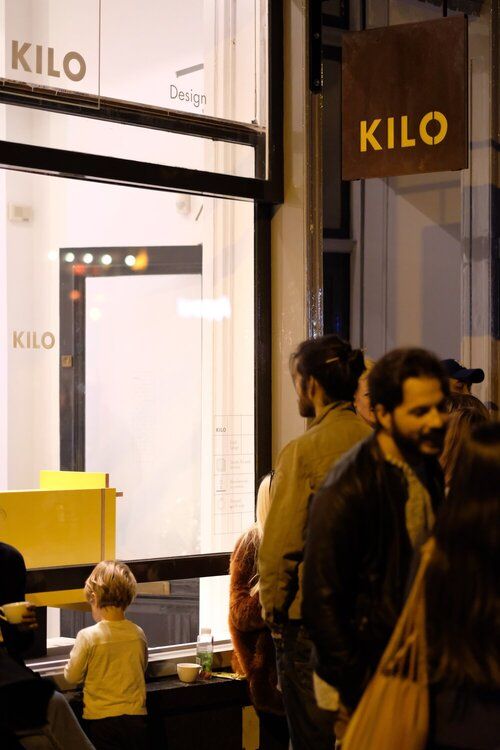
Though they had received some funding from angel investors, they didn’t have a lot to put into marketing or even their website. Their website was built on the same principles as KILO: structured and scalable. There were a lot of constraints in the beginning and, when you are forced to design within them, it fuels creativity. They built their website on a budget and had a friend do the photography to save additional costs.
In 2019 JP received an email from Salsita Software CEO Matthew Gertner that would elevate KILO to the next level. Salsita had recently finished building their 3D Product Configurator Framework and was searching for a company that offered customizable products. JP was interested in implementing a configurator on his website, so he replied.
The first thing that JP noticed about Matt and the Salsita team was their enthusiasm. “I know the ins and outs of the issues we were facing, so when I proposed what I thought should happen, it was very much appreciated,” said JP. "They made me think everything was possible, which was a nice starting point to our cooperation.”
In talking to JP, it was clear that KILO was a victim of their own success. He was overwhelmed with drawing and drafting work. And he and Peter were sure that they were leaving significant revenue on the table by not offering customized furniture online. – Matthew Gertner, Salsita CEO
A couple of weeks after formulating their game plan, they kicked off a three-day Design Sprint, headed by Project Manager Alfred DeRose. “In addition to his obvious interest as co-owner of KILO, I think JP’s background as an architect and designer is what led to his high level of engagement in the Design Sprint process,” said Alfred. “It was off the charts, and that gave us a great advantage in understanding his business, his needs, and those of his customers.”
JP had done design workshops before, but he found this one to be quite intense. “We worked really hard and had a lot of fun,” said JP. “After three days, when I looked where we were, I was really impressed.” The Design Sprint was a success for everyone involved, but JP started to think that maybe implementing a 3D configurator would be too good to be true.
Matthew struck me as very knowledgeable. He had a clear vision of where he wanted to take the collaboration and I feel there was a base of mutual trust from the outset, which is a very important factor in these kinds of collaborations. - Peter Smit, KILO Co-Founder
When they got started, JP’s first thought was that maybe Salsita could just sell them a standard configurator. This appealed to him, but he didn’t want to receive dozens of emails from the website that said, “You’ve just sold 20 tables.” JP or Peter would still have to manually adjust the sizes and feed the info into the CNC machine. As a result, if online sales increased, KILO’s workload would explode.
The solution to this was that Salsita would adapt its 3D Product Configurator Framework to accommodate the exceptional level of customizability afforded by KILO's manufacturing process. The configurator would then be deployed on KILO's e-shop, with designs submitted by customers fed directly into the CNC machine.
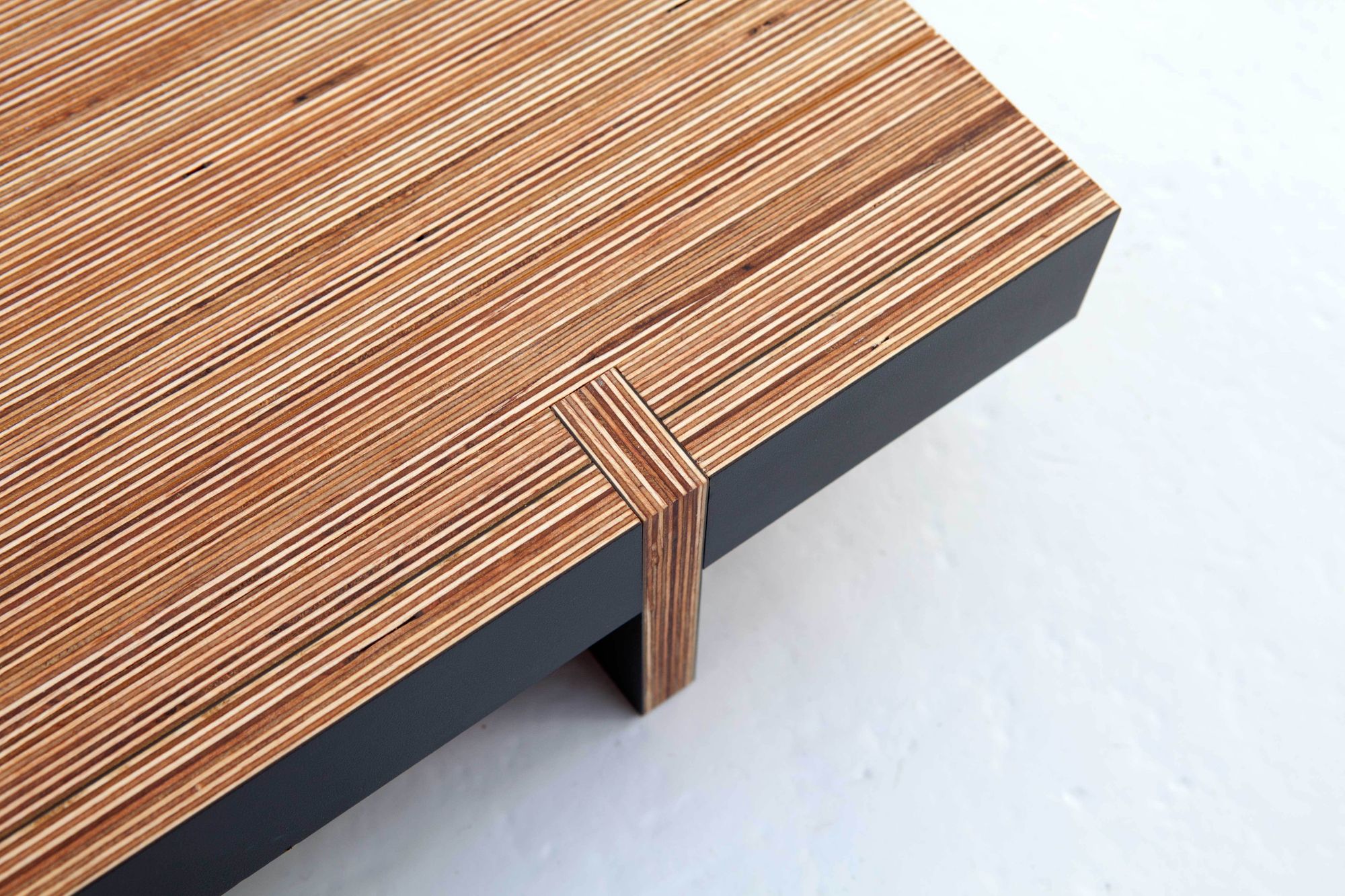
In this way, customers would be able to order highly customized pieces online while greatly reducing the amount of manual intervention required to fulfill each order. When JP brought up the need for having a configurator handle both sides of the website, he expected some hesitancy from Matt. “To my surprise he only became more enthusiastic,” said JP.
Finding the right way to model the furniture was the biggest challenge. It's pretty rare to find a configurator with this level of versatility, mainly because defining how the shape of a 3D model reflects provided dimensions is never trivial. In the end, we came up with our own syntax that allows us to model KILO's whole portfolio while still being reasonably simple. – Jiri Stanisevsky, Salsita Chief Architect
Two months later, an initial version of the configurator was ready for testing. Another month was spent fine-tuning the implementation and integrating it seamlessly into KILO's existing e-shop. The next phase included integrating the online configurator into KILO’s manufacturing process. “This involved implementing an Order Dashboard allowing KILO to map the designs automatically onto the laminated plywood boards,” said Matthew. “The resulting design specifications can now be generated automatically and fed directly into the CNC machine.”
From the dashboard, JP and Peter can see all orders coming in and, from there, they can feed the CNC machines with the orders. They recently completed a second Design Sprint and they found solutions to multiple tricky design challenges. “We’re now building the backside and testing out one piece on the site for the configurator,” said JP. “Then we will test everything from the front to the backside and, when that works, we will add the rest of the furniture pieces and slowly ramp it up.
To get a full rundown of the collaboration between KILO and Salsita, read our case study.
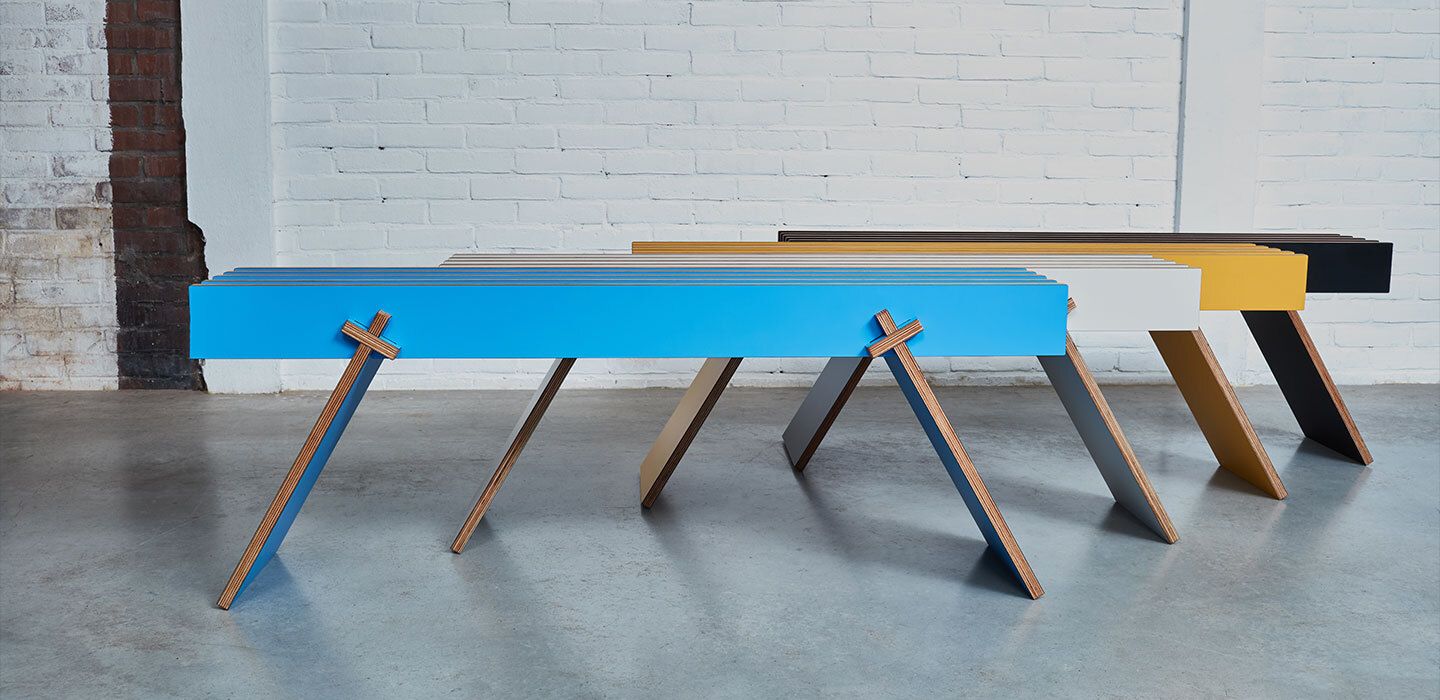
KILO's Next Steps
KILO is only a three-year-old company, but thanks to Salsita’s help they are ready to start their next phase of growth. “Peter and I felt it was important to see our clients in the beginning, so we did a lot of the deliveries ourselves,” said JP. “The making and designing were very important to control to see where the glitches were.” After a couple of years, KILO has managed to steer out of the way a bit and look further down the road.
KILO is currently looking for investors to scale up and expand internationally. They just opened their second shop in Belgium, but they’d really love to have one in the US, Canada, or Asia. That way they wouldn’t have to ship furniture all around the world and each shop could use materials from within their region. “The new website with the configurator and cooperation with Salsita were a great start to make us look more professional and to gain more attention,” said JP.
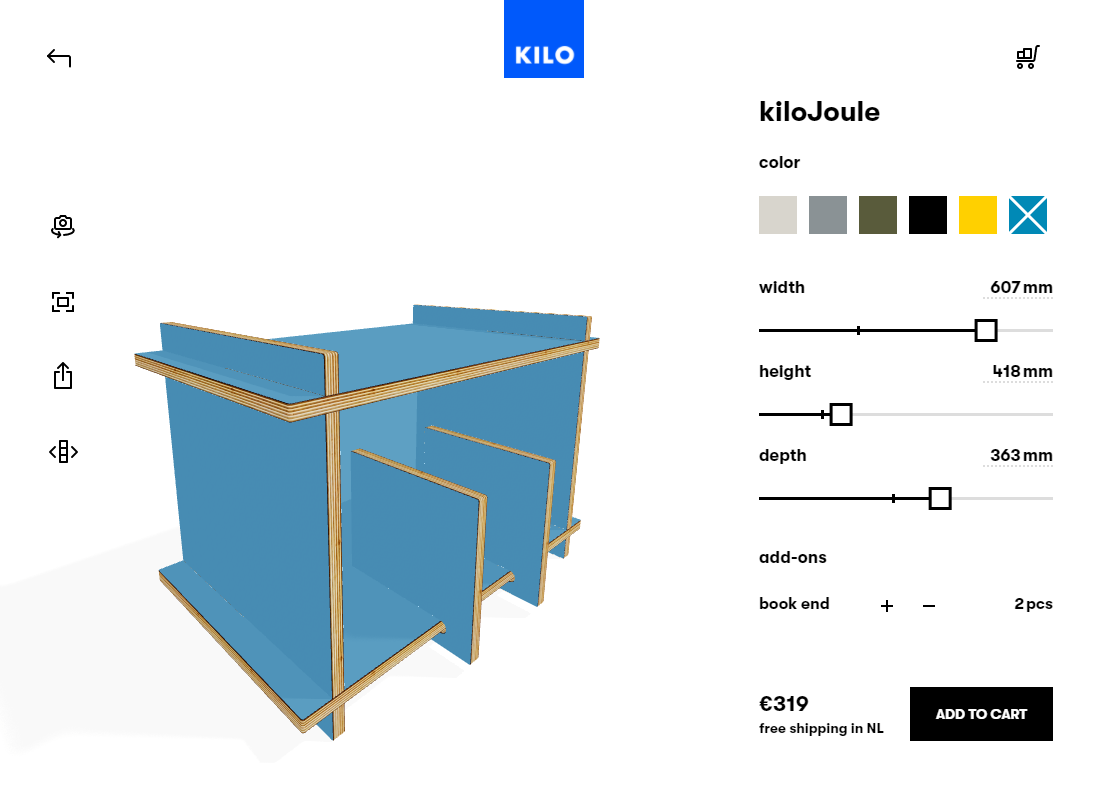
Test out the configurator yourself and customize KILO's kiloJoule, the kiloWatt's "little brother."


